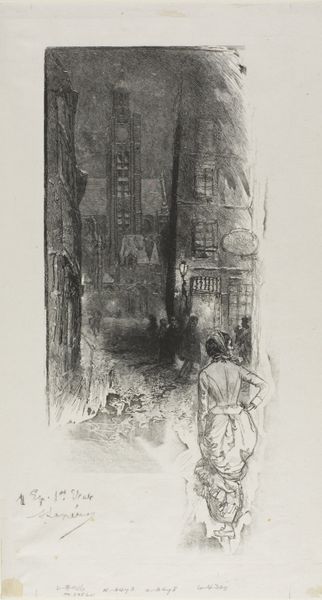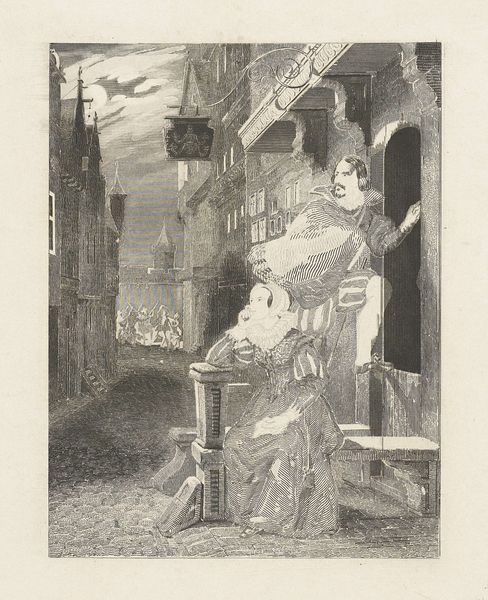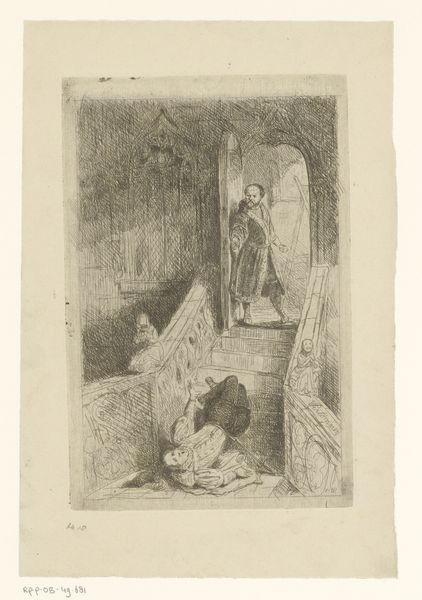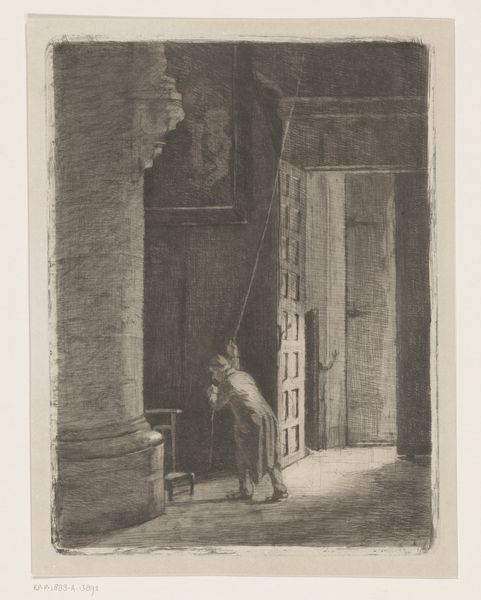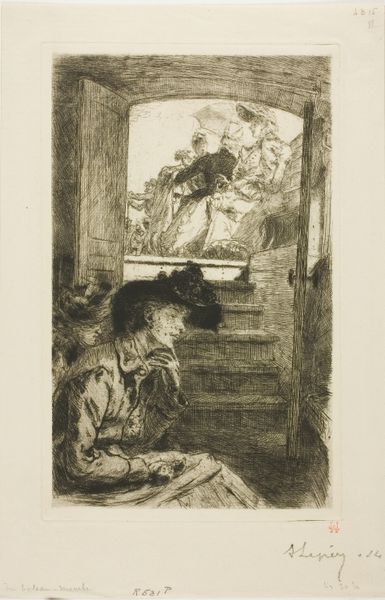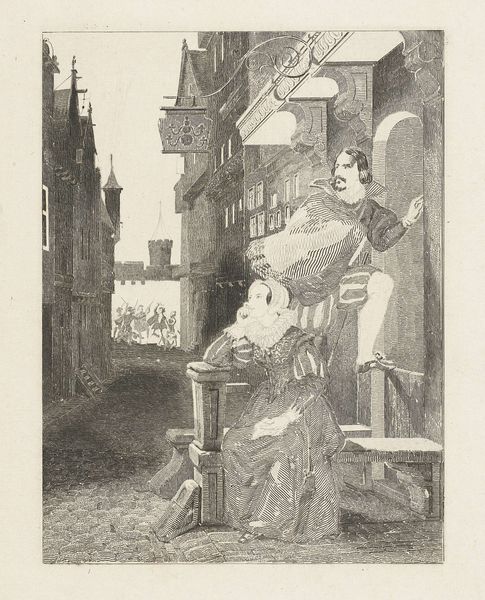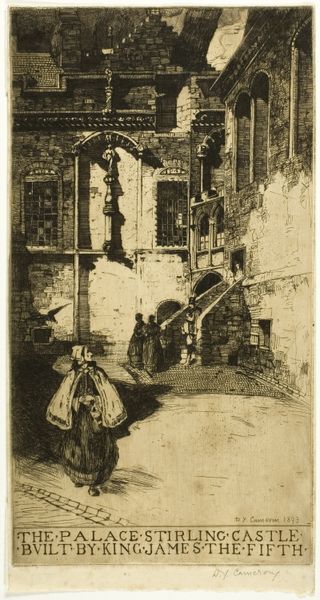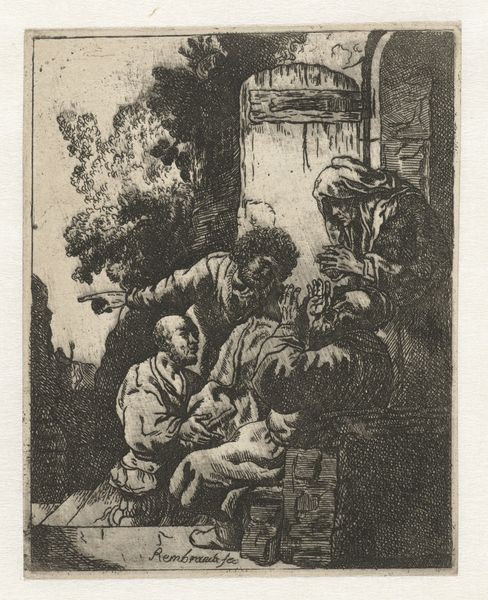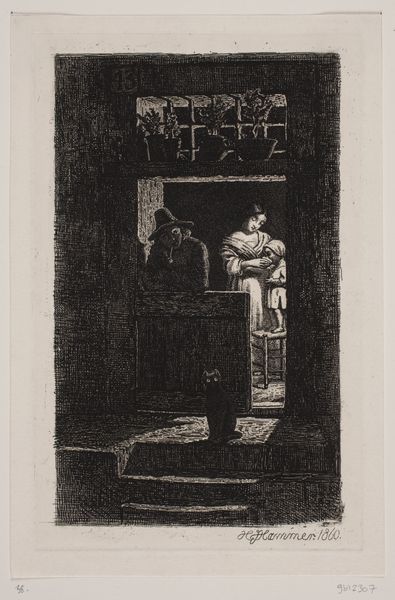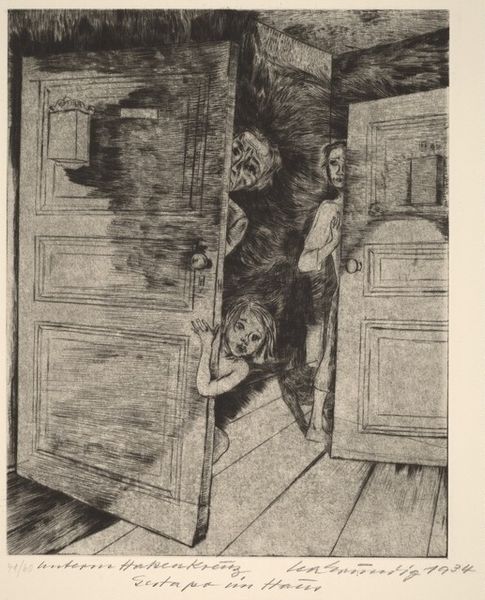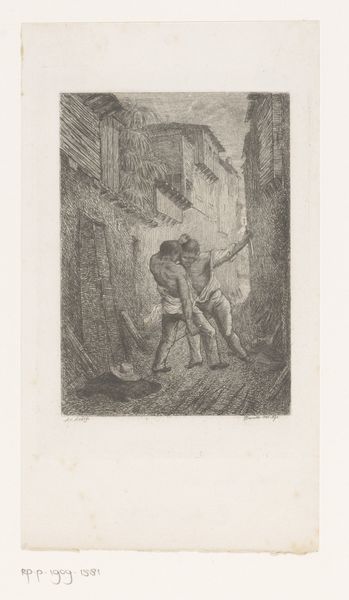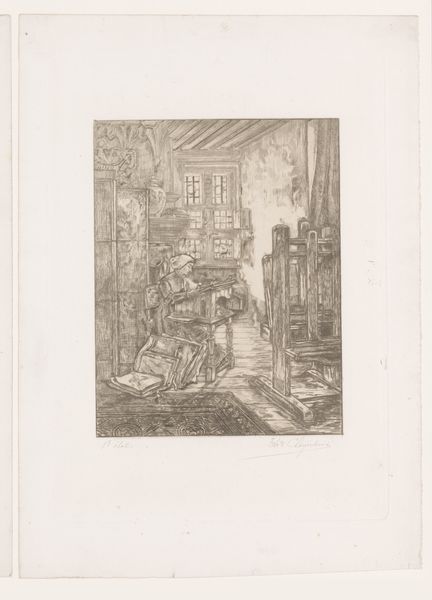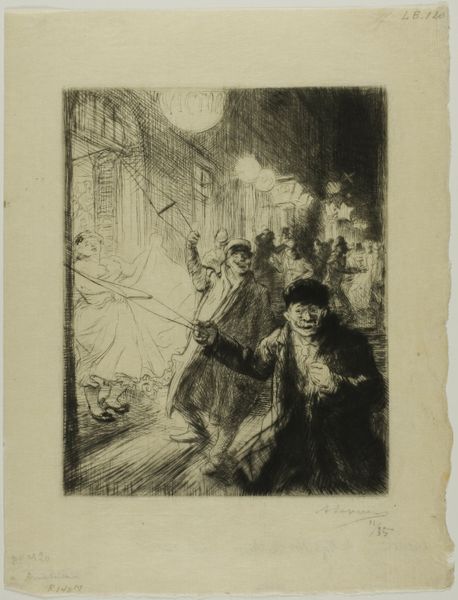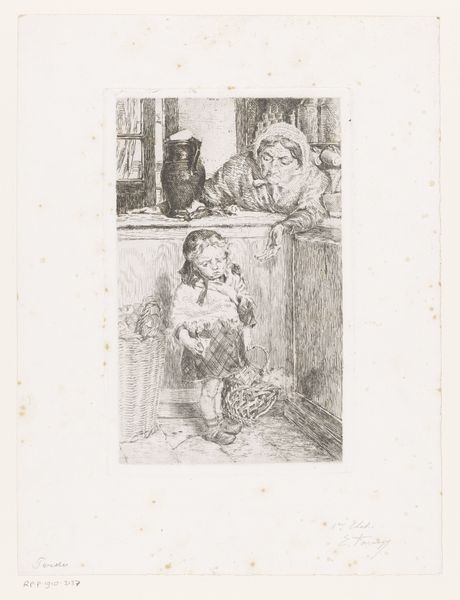
drawing, print, etching
#
drawing
#
narrative-art
# print
#
impressionism
#
etching
#
figuration
#
cityscape
Dimensions: Sheet: 13 1/4 × 9 1/16 in. (33.7 × 23 cm) Plate: 7 3/4 × 5 1/16 in. (19.7 × 12.9 cm)
Copyright: Public Domain
Curator: Félix Bracquemond’s "L'Eclipse," created in 1869 and now residing at The Met, presents us with a curious street scene rendered through etching and drypoint. What strikes you first about this print? Editor: Immediately, the contrast! The way light pours down the street, juxtaposed with the watchful figures at the windows, it evokes both drama and intimacy, a sense of communal, expectant stillness. Curator: That stillness, I think, speaks to the specific social context. Urban communities were rapidly evolving in 19th century Paris, marked by increasing scientific interest in natural phenomena and the growth of public spectacle. Here, Bracquemond captures a moment where daily life pauses for a shared experience. Editor: Absolutely. Eclipses, like comets, were potent symbols of change, of unseen forces capable of disrupting the known world. Notice how the artist has posed some people, especially the women in the foreground who seem hopeful and enthusiastic, perhaps speaking to that era's sense of wonder and the mystery of the universe. Curator: I appreciate your point about their collective anticipation. However, I see a hint of societal tension. Those observing from their windows – rather than actively participating in street festivities – reflect the anxieties accompanying urban expansion and population density during the period. It’s a society watching itself in a moment of flux. Editor: Yes, there’s that. But the ladders and silhouetted forms hint at possible danger as well. People standing outside in a strange light evokes the primitive fear that this shift in light could spell unforeseen trouble. Eclipses always play with the human sense of order. Curator: Interesting. Perhaps Bracquemond meant to represent both wonder and unease, emotions intertwined with modernization. The etching's success, then, lies in presenting this ambiguity. Editor: Indeed, its lasting power may be exactly its skillful capture of conflicting emotions through the compelling interplay of light, shadow, and watching figures. I wonder if they truly felt in harmony. Curator: It gives us something to think about. It's like history recorded with symbolism, inviting continued contemplation.
Comments
No comments
Be the first to comment and join the conversation on the ultimate creative platform.
